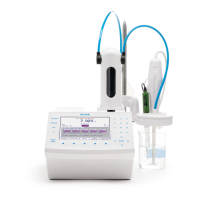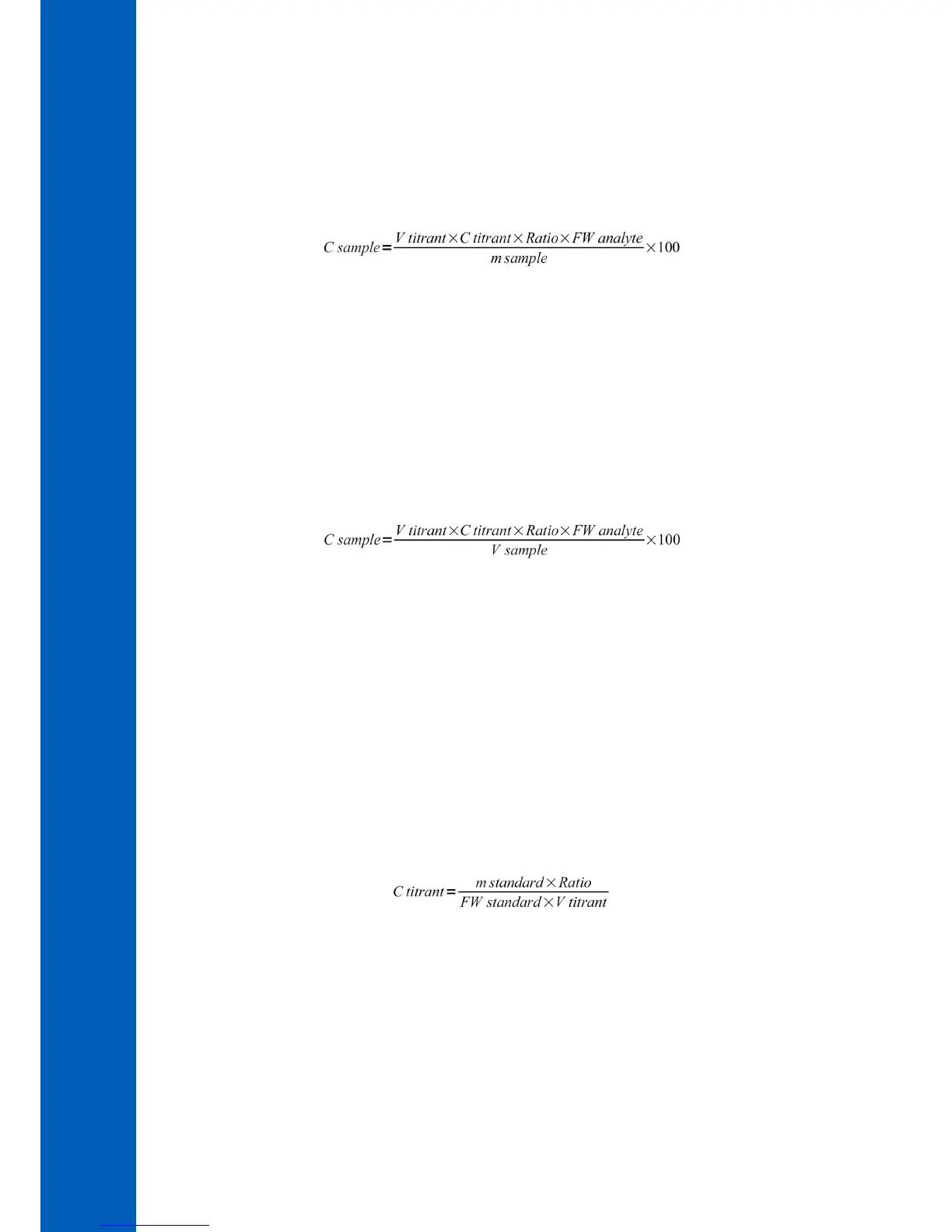5. CALCULATIONS
The main variables used in calculating a result from a titration are the sample volume, the concentration of the titrant, and the
volume of titrant required to reach the equivalence point. At the equivalence point, an equal number of equivalents of the analyte
and titrant has been added.
5.1. SAMPLE CALCULATION
By Mass
C sample Sample Concentration (g/100g)
V titrant Volume of titrant (L)
C titrant Titrant Concentration (eq/L)
Ratio Equivalence ratio of analyte/ titrant (mol analyte/ eq titrant)
FW analyte Formula Weight of the Analyte (g/mol)
m sample Mass of sample (g)
By Volume
C sample Sample Concentration (g/100mL)
V titrant Volume of titrant (L)
C titrant Titrant Concentration (eq/L)
Ratio Equivalence ratio of analyte/ titrant (mol analyte/ eq titrant)
FW analyte Formula Weight of the Analyte (g/mol)
V sample Volume of Sample (mL)
5.2. STANDARDIZE TITRANT
Titrant standardization is the second most important calculation in titrations. A primary standard is titrated in order to determine the
concentration of the titrant. This is essentially a typical titration calculated in “reverse”, where the concentration of the solution is
known and the titrant is the unknown.
By Mass
C titrant Titrant Concentration (N)
m standard Mass of Standard (g)
Ratio Equivalence ratio of titrant/standard (eq titrant/ mol standard)
FW standard Formula Weight of the Standard (g/mol)
V titrant Volume of Titrant (L)

